Realizing Children’s Rights in Trinidad and Tobago
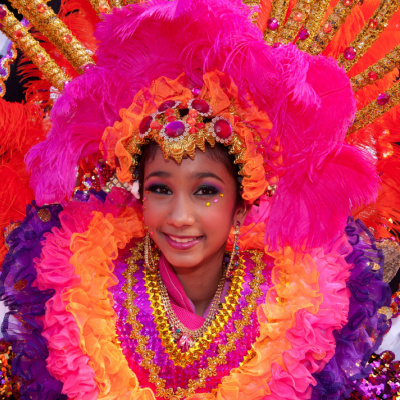
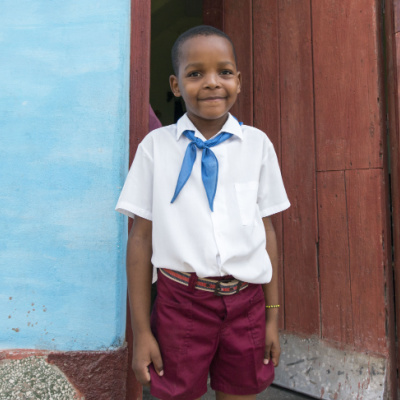
Trinidad and Tobago is the third richest country in the Caribbean archipelago, and home to multicultural communities, composed of mixed ethnic groups of predominantly Africans, and Indians. The country is famous for its high-income population of over one million but is equally notorious for frequent instances of child murder, sex trafficking, and both mental and physical abuse. (Marahaj V, n.d.)

Children’s Rights Index: 7,88 / 10
Orange level: Noticeable problems
Population: 1.4 million
Pop. ages 0-14: 19.8%
Life expectancy: 73.5 years
Under-5 mortality rate: 15 ‰
Trinidad and Tobago at a glance
The Republic of Trinidad and Tobago is the southernmost island in the Caribbean sea. It shares the border with Venezuela on the northeast and the North Atlantic Ocean on the east. As the name indicates, the country is composed of two islands, Trinidad and Tobago. Trinidad is larger and is home to the capital, Port of Spain. The country was colonized by Spain and the United Kingdom, and gained its independence in 1962. Most of the citizens are Christians, who use English as their official language, alongside Trinidad English and creole dialects. (Robinson A, 2022)
Today’s Tobago used to be known as a beautiful bird heritage site in the 1970s. The Bird of Paradise Island is still relatively unknown as it didn’t witness high levels of development like the other peninsulas in the Caribbeans. Trinidad and Tobago heavily rely on the export of sugar, rice, coconuts, and poultry, as well as oil production and petroleum drilling. In regard to climate, hurricanes and tropical storms occur frequently, with one of the most devastating hurricanes hitting the island in 1993 and severely damaging cacao plantations and petroleum companies (Doodnath A, 2020). However, despite dangerous tropical storms that sweep the islands every now and then, tourism is a thriving industry.
While the health system in Trinidad and Tobago is accessible to all, the quality of medical service remains questionable. The country is struggling to maintain its medical infrastructure and system amidst economic challenges. Primary and secondary education is both mandatory and free for children.
There are several universities across the island that teach students science, engineering, art, and other important skills. As is the case in most countries, a significant section of the population lives in the cities, close to the administrative centers and markets. The villages in the country are racially and ethnically diverse, inhabited by families that maintain tight connections. (Robinson A, 2022)
Status of children’s rights [1]
Children in Trinidad and Tobago are protected under the Convention on the Rights of the Child since 1991. The country also ratified the World Declaration on the Survival, Protection, and Development of Children in 1990.
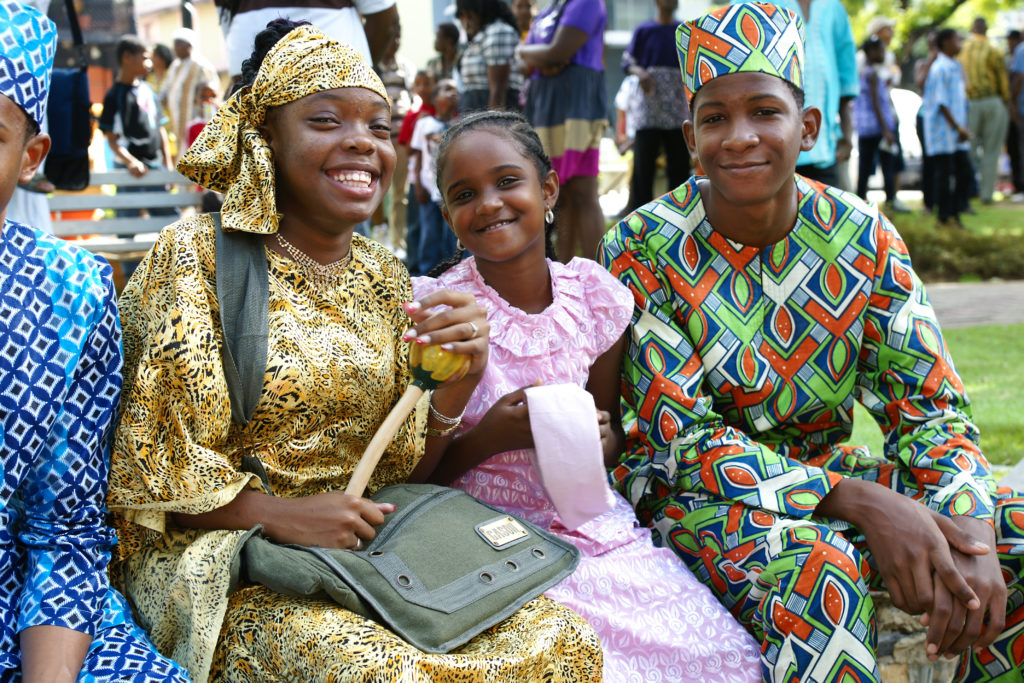
Both agreements aim to help children realize their rights to health, and education, as well as promote full development in an environment conducive to their growth. Although the country has had some success in investigating and resolving conflicts, there is still so much more to be done. Corporal punishment, domestic violence, children living in poverty, sexual exploitation, and other forms of discrimination are a few of the most persisting issues present. (UNHR, 2006)
Preventing sexual abuse and child pornography remains high on the priority list. The country is struggling with the implementation of modern and fair principles that would protect children from excessive violence. Psychologists and psychiatrists form an important part of the system, as their active involvement can help children heal the trauma.
Children have the right to special protection and apart from their parents, it is also the country’s responsibility to guarantee safety. Children can only thrive in nurturing environments that promote their full growth through high-quality education, health system, and other initiatives that promote children’s rights. (CRIN, 2016)
The country is working on a stable infrastructure that can help eradicate violence against children and women. Through a series of training, led by experts, the authorities educate the masses on gender violence and sexual harassment. The goal is to raise awareness and offer support to those who need it the most. Poverty and social status significantly influence the understanding and societal norms that the citizens of Trinidad and Tobago abide by. The government should work on all socio-economic aspects in order to improve the overall situation in the country. (CRIN, 2016)
Addressing the needs of children
Right to education
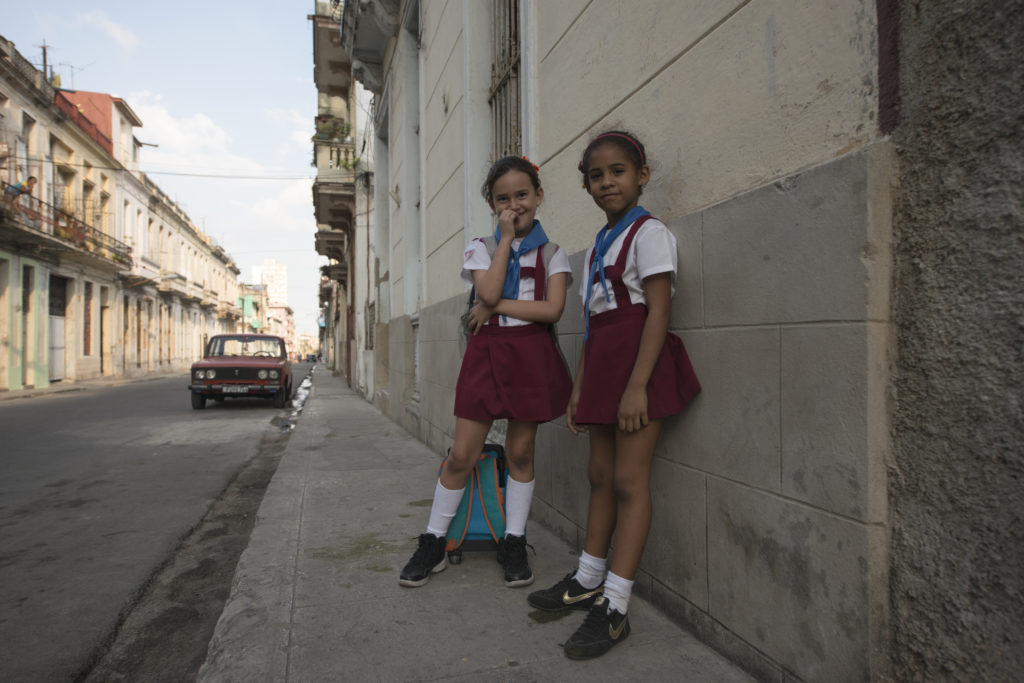
In 2020, the authorities equipped school labs with computers to keep up with modern technologies. Thousands of students and teachers received training through the government’s initiative. Social support remains a crucial part of children’s right to free education, and in Trinidad and Tobago, children are entitled to free food, transportation, and school uniforms. School is compulsory for children aged between five to sixteen, and physical punishment is prohibited by law. (CRIN, 2016)
The Special Education Unit acts through the Ministry of Education to help children with disabilities realize their right to education by attending school. These children are supported by special teachers who can identify and fulfill their needs. They cooperate with therapists and refer students for specialized treatments. They are also in charge of presenting alternative teaching strategies and advising homeroom teachers on how to best approach children with disabilities. (CRIN, 2016)
In spite of the government’s effort to educate every child, Trinidad and Tobago is facing a learning crisis like many other poor countries. Paradoxically, the two islands qualify as high-income economies, with one of the highest GDPs in the entire America in terms of purchasing power. (Oxford Business Group, 2020) According to reports from 2019, 20% of the children on the island are illiterate. (The World Bank, 2019)
This metric is usually referred to as learning poverty and serves to measure the number of children under the age of ten who can’t read or write. Although Trinidad and Tobago is doing better than other Latin American countries, there is still significant room to improve child literacy. (The World Bank, 2019)
Right to health
Based on the yearly average, more than 2,500 teenage girls in Trinidad and Tobago conceive. Sadly, some of these girls are as young as twelve years old. Additionally, it is common for older men to assume responsibility for a young girl’s pregnancy. Humanitarian organizations have made significant efforts to persuade the government to abolish child marriages and focus on educating girls instead. The goal is to eliminate teenage pregnancies as they can be life-threatening at such a young age. (CRIN, 2016)
In 2017, the government officially abolished child marriages and raised the legal age to eighteen. Certain religious groups opposed the decision, claiming that age is not indicative of maturity, but the claims were rejected and the bill was passed. (Mendes-Franco J, 2017)
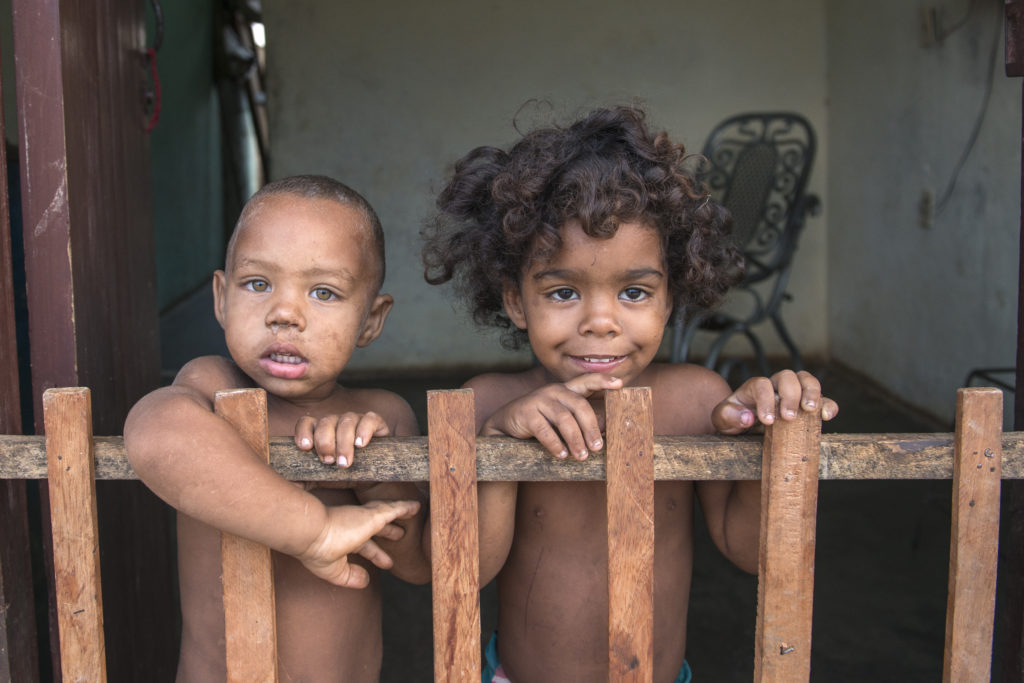
Unlike the other continents, Latin America is still struggling with a high number of HIV/AIDS cases in namely Brazil, Haiti, and Mexico. A staggering 60% of children live with this incurable disease in the Caribbean region. More than half of children die before they turn five, contracting the virus from their mother while in the womb. (UNICEF, 2018) Women and girls are six times more likely to get diagnosed with human immunodeficiency virus which can also turn into a severe, lethal condition, in the worst-case scenarios. This is why prevention and treatment are of crucial importance.
Right to protection
According to the court, children under the age of seven cannot be criminally persecuted. This age limit is considered quite low, which is why the government might raise the minimum age to ten. Trinidad and Tobago follow the law of England to determine penalties for the offense. In some cases, it can lead to hefty fines or even imprisonment, if the child confesses being fully aware of the committed deed. Whilst this might not be the best way to educate children, every case is considered separately, also while taking into consideration the Children Act that defines the notion of a child as being up to 18 years of age. (Consortium for Street Children, 2021)
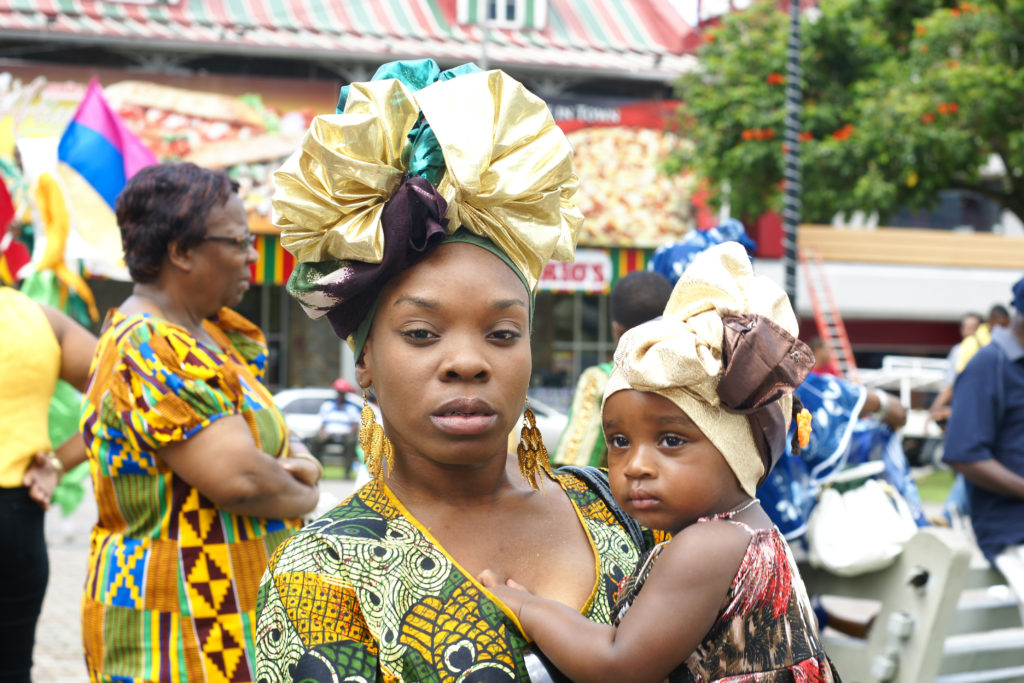
The Children’s Authority Act of Trinidad and Tobago protects children from being physically abused. Also, children who commit petty crimes and minor offenses are usually sent to designated schools or children’s homes. On the occasion that children are neglected for any reason, or they simply need protection, the government takes responsibility by punishing the adult who mistreated the child. Authorities are also able to receive the child into their care, which effectively solves the problem of child begging or child molestation on the streets, up to a certain extent. (Consortium for Street Children, 2021)
Risk factors -> Country-specific challenges
Exploitation
COVID-19 has only worsened the illegal acts of sexually exploiting and trafficking children and women in Trinidad and Tobago. Even though the government is aware of the gravity of the problems, its efforts haven’t seen results. The culprits are not being punished under the law, and victims oftentimes remain in the shadow. The authorities are trying to fix the issue by providing training and identifying more victims. In order to successfully combat this unhealthy practice, they should also focus on applying the anti-trafficking law under which harsh punishments could be imposed. (U.S. Department of State, 2022)
The government is urged by NGOs to be more proactive in strengthening rules and regulations that will protect children from harm. Victims should also be able to report illicit behavior in a fast and secure manner. Authorities are aware of how these experiences can negatively affect already vulnerable and fragile children, which is why they’ve implemented harsher financial fines for crimes involving children.
On the other hand, it became known to the public that some police officers and government officials who were involved in child sex trafficking were released on $44,000 bail. (U.S Department of State, 2022) This sheds light on the levels of corruption within the system that directly robs children of their rights.
Child trafficking
Most of the sex trafficking victims are illegal immigrants fleeing from their country because of poor socioeconomic status or devastating war. Families and children who cross the borders of Trinidad and Tobago are more susceptible to trafficking due to their ambiguous status as asylum seekers. The border police often detain immigrants, who can later be subjected to all forms of abuse.
Children are not able to attend school, which directly violates their rights to education and non-discrimination. As a reminder, the country ratified the Convention on the Rights of the Child 31 years ago. Due to an ongoing humanitarian crisis in their birth countries, children of Venezuela and Cuba often fall victim to the human trafficking mafia and racism. (U.S. Department of State, 2022)
Victims are usually lured into accepting promising jobs in Trinidad and Tobago. Once they enter the country, traffickers confiscate their passports and exploit the migrants through forced labor and commercial sex. If they try to escape, the police catch them as fugitives and they end up at the same place where they started.
For most of them, this vicious circle of abuse and violence leaves them damaged for life. According to the 2020 UNODC Global Report on Trafficking on Persons, 72% of the sex trafficking victims in the world are girls under the age of eighteen. (The International Organization for Migration, 2022)
Violence
Trinidad and Tobago see a high rate of crime, violence against children and child homicide. The statistics reached alarming levels with the country having one of the highest murder and crime rates out of sixteen Caribbean countries. “Child murder accounts for about 5% of all murders in Trinidad and Tobago. In 2013, the child murder rate was 8.5 per 100,000.” (Hunte M, 2016)
According to the World Report on Violence Against Children in 2016, boys are in greater danger than girls, especially adolescents aged from 15 to 17. The worst year for Trinidad and Tobago was 2009 when 38 cases of child homicide were reported, out of which 82% were young boys.
The criminals were usually older men of African descent, who used firearms or sharp instruments to fatally injure innocent children. Most of the cases have been characterized as gang-related according to police officials (Hunte M, 2016)
To combat violence, the government opened a national hotline accessible to everyone in the country, to be able to report criminal behavior on the spot. Additionally, the government invested in research, with a special focus on violence and victimization studies, encouraging children to talk about the abuse they didn’t necessarily report. These children have the right to be protected from harm under the Children Authority Acts, as well as the United Nations Convention on the Rights of the Child which was adopted by Trinidad and Tobago in 1991. (Hunte M, 2016)
Written by Lidija Misic
Internally proofread by Aditi Partha
Last updated on September 30, 2022
Bibliography:
Consortium for Street Children, Trinidad and Tobago, Is it legal for children to beg (April 2021), retrieved from: https://www.streetchildren.org/legal-atlas/map/trinidad-and-tobago/status-offences/is-it-illegal-for-children-to-beg/, accessed on September 29, 2022.
CRIN, Trinidad and Tobago: Children’s rights references in the universal periodic review (May 10, 2016), retrieved from: https://archive.crin.org/en/library/publications/trinidad-and-tobago-childrens-rights-references-universal-periodic-review.html, accessed on September 29, 2022.
Hunte Maxine, Research Gate, Child Homicide in Trinidad and Tobago: A Preliminary Investigation (January 9, 2016), retrieved from: file:///Users/lidija/Downloads/ChildHomicide-APreliminaryInvestigation2016.pdf, accessed on September 30, 2022.
Doodnath Aline, Loop, 10 of the deadliest storms and hurricanes to hit Trinidad and Tobago (July 24, 2020), retrieved from: https://tt.loopnews.com/content/10-deadliest-storms-and-hurricanes-hit-trinidad-and-tobago, accessed on September 28.
Marahaj Vrishni, Our colorful voices, Child rights situation in Trinidad and Tobago (n.d.), retrieved from: http://nuestravozacolores.org/en/article-on-child-rights-situation-in-trinidad-and-tobago/, accessed on September 27, 2022.
Mendes-Franco Janine, Global Voices, Child Marriage Is No More in Trinidad and Tobago (June 12, 2017), retrieved from: https://globalvoices.org/2017/06/12/child-marriage-is-no-more-in-trinidad-tobago/, accessed on September 30, 2022.
Oxford Business Group, Country Profile, The Report: Trinidad and Tobago 2020, retrieved from: https://oxfordbusinessgroup.com/trinidad-tobago-2020/country-profile, accessed on September 30, 2022.
Robinson Arthur, Britannica, Trinidad and Tobago (September 25, 2022), retrieved from: https://www.britannica.com/place/Trinidad-and-Tobago, accessed on September 27, 2022.
The International Organization for Migration, Trinidad: Helping Human Trafficking Survivors Start Again (February 7, 2022), retrieved from: https://reliefweb.int/report/trinidad-and-tobago/trinidad-helping-human-trafficking-survivors-start-again, accessed on September 29, 2022.
The World Bank, Trinidad and Tobago: Learning poverty brief (October 2019), retrieved from: https://thedocs.worldbank.org/en/doc/873311571223374548-0090022019/original/LACLCC3CTTOLPBRIEF.pdf, accessed on September 30, 2022.
UNHR, Committee on Rights of Child considers report of Trinidad and Tobago (January 16, 2006), retrieved from: https://www.ohchr.org/en/press-releases/2009/10/committee-rights-child-considers-report-trinidad-and-tobago, accessed on September 29, 2022.
U.S. Department of State, Trafficking in Persons Report: Trinidad and Tobago (2022), retrieved from: https://www.state.gov/reports/2022-trafficking-in-persons-report/trinidad-and-tobago/, accessed on September 29, 2022.
UNICEF, Children HIV and AIDS, Regional snapshot: Latin America and the Caribbean (December 2018), retrieved from: file:///Users/lidija/Downloads/LAC-regional-snapshot-2018.pdf, accessed on September 30, 2022.
[1] This article by no means purports to give a full or representative account of children’s rights in Trinidad and Tobago; indeed, one of many challenges is the scant updated information on the children in Trinidad and Tobago, much of which is unreliable, not representative, outdated or simply non-existent.

